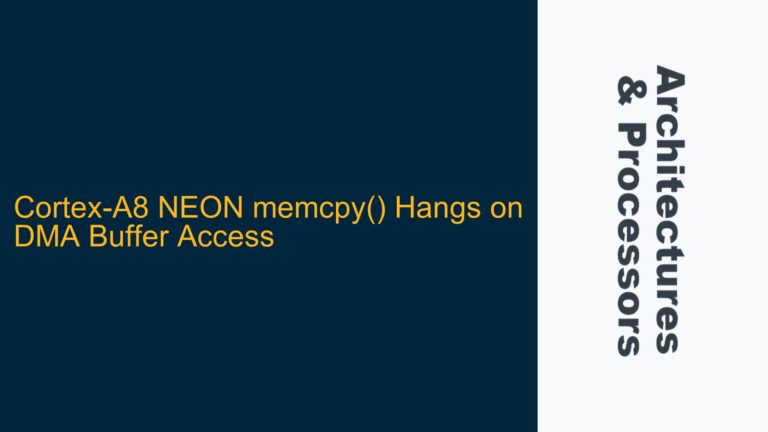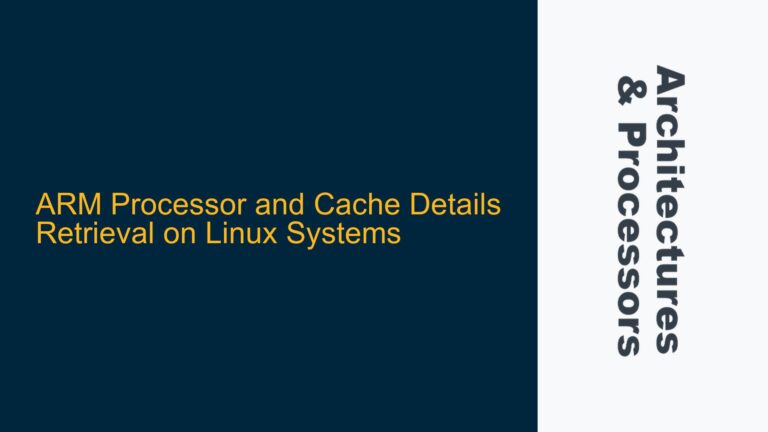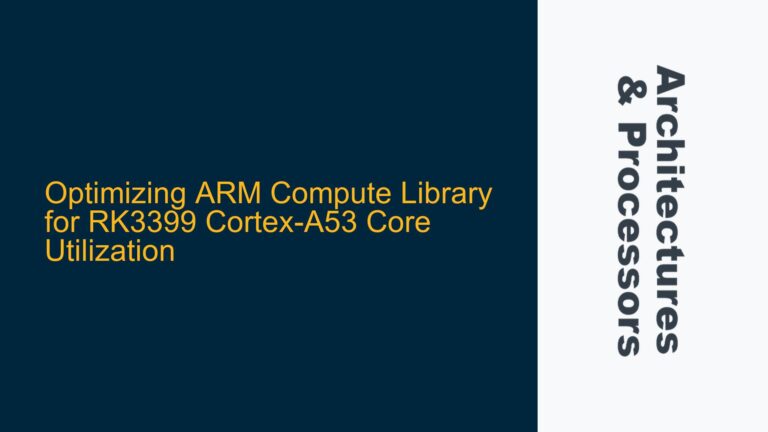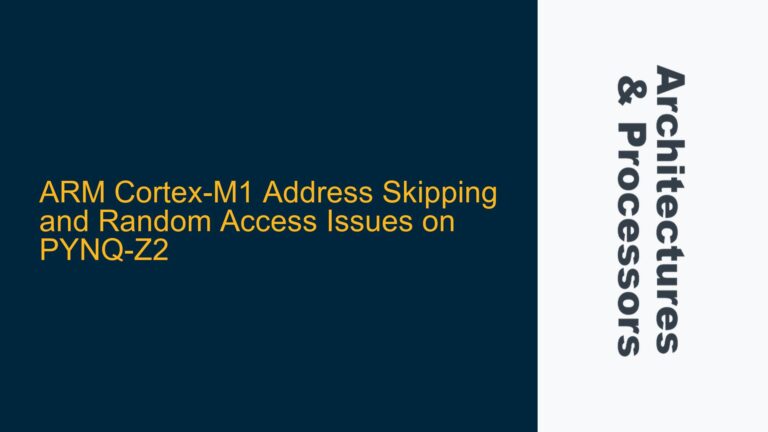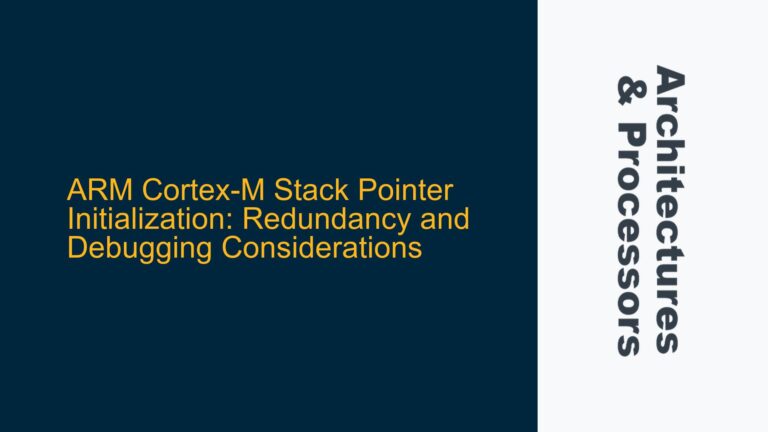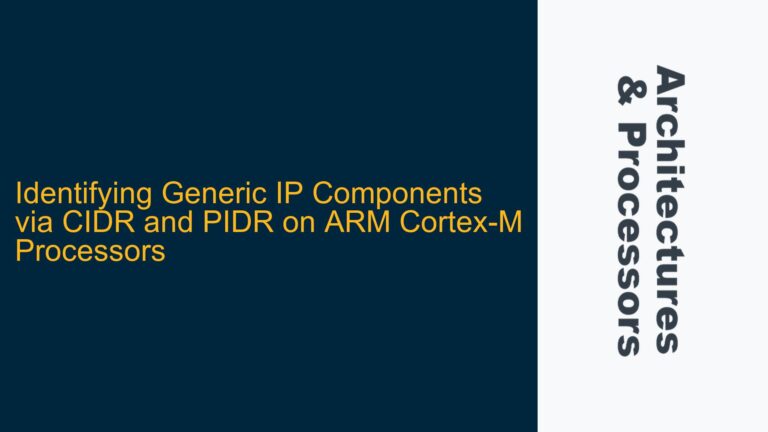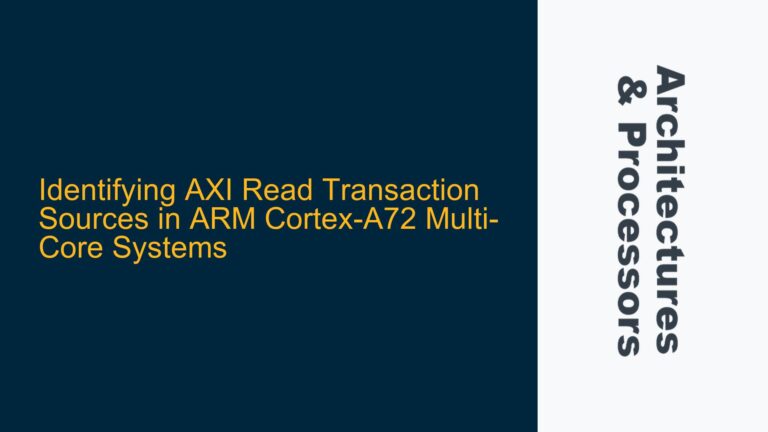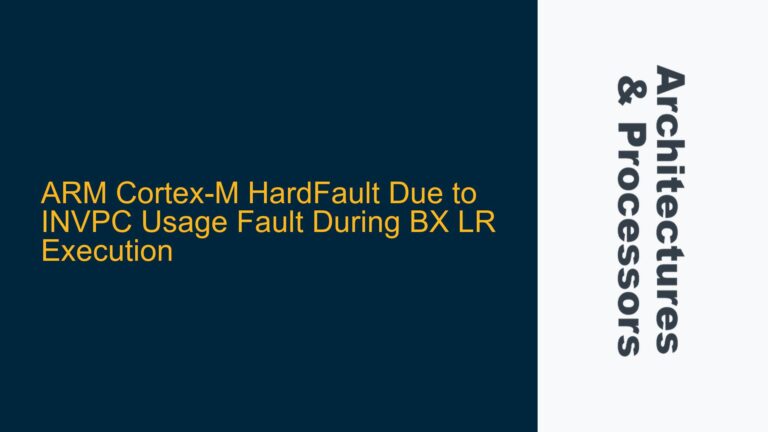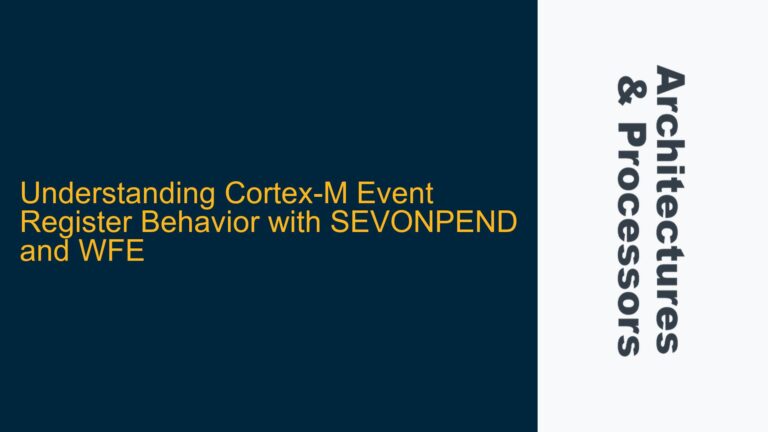Cortex-A8 NEON memcpy() Hangs on DMA Buffer Access
ARM Cortex-A8 NEON memcpy() Hangs During DMA Buffer Operations The ARM Cortex-A8 processor, known for its efficient handling of multimedia and signal processing tasks, leverages the NEON SIMD (Single Instruction, Multiple Data) engine to accelerate data-intensive operations. However, when using NEON instructions to perform memory copy operations (memcpy()) into a DMA (Direct Memory Access) buffer,…
